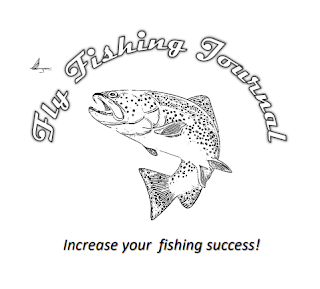Black Near Deere Variant
Here is a variant of the Near Deere tied using the same material as the Olive Near Deere but uses one black marabou plume and no chenille. Instead, the marabou plume is used in place of the chenille.
We still prefer using chenille when tying a Near Deere, but in making do with what we have, this approach allows us to skip a trip to Cabelas just for one item – black chenille.
The pattern works for stocker trout in our area, and skipping the chenille makes for a quicker tie. Do check out the steps below on how we tie the Black Near Deere Variant.
Tying the Black Near Deere Variant
First step is to build the thread base like normal, ending just slightly past the point where a perpendicular line from the hook point to the hook shank would intersect.
Then, build a slight “hump” with the tying thread as shown in Picture 1. The hump helps lift and spread the feathers of the marabou tail from the hook shank.
Next, measure a hook shank length of the marabou plume and secure it to the hook shank just forward of the hump made in the first step.
Secure it using several thread wraps tightly as the marabou tends to slip while be tied in place.
If it does slip, re-position the marabou to ensure the marabou tail rides upward and inline with the hook shank (see Picture 2).
Then, secure the Ultra Wire and Grizzly Hackle as shown in Picture 3, and like in the previous step, secure it tightly to the hook shank with several thread wraps.
When tying in the Ultra Wire and Grizzly Hackle, tie the Ultra Wire in place first, then follow with the hackle. Also, for the hackle, tie it in place concave side down.
So far, the previous steps are the same as the Olive Near Deere. However, at this point, we forego the chenille and use the remainder of the marabou to form the Near Deere’s body.
To accomplish this, twist the marabou onto the tying thread for several turns (see Picture 4), then grasp the tying thread and the marabou and begin wrapping it on to the hook shank.
When wrapping the hook shank, the body will be formed by two to three turns of the marabou around the hook shank (see Picture 5).
Once the body is formed, secure the marabou in place just behind the jig head using several thread wraps, and then hold in place with a half-hitch.
Once secure, trim the excess marabou.
After trimming the excess marabou, the end result should look like the photo in Picture 6.
The marabou is secured just behind the jig head with a several thread wraps and a half-hitch.
The Ultra Wire and Grizzly Hackle are secured to the rear of the hook shank, and are ready to be wrapped around the body as noted in the next step.
The final step starts with palmer-wrapping the the Grizzly Hackle to the Near Deere’s body stopping just short of the jig head.
Then, secure the hackle in place with several wraps and a half-hitch, and follow with wrapping the Ultra Wire evenly along the body and through the hackle.
Similar to the hackle, secure the Ultra Wire with several wraps, break off the wire, and then complete with a whip-finish knot and head cement. See Picture 7 of the the finished Black Near Deere Variant.
- Material List
- – Size 1/80oz or 1/124oz jig hooks
- – Back Marabou
- – Grizzly Hackle
- – Gold Ultra Wire
- – Black Tying Thread
PS: Here is the article that shows how we normally tie a Near Deere – “Three Suggested Fishing Flies for Rainbow Trout“. It also includes a video of another Near Deere variant – the Olive/Brown Near Deere. Do check it out.










Comments
Post a Comment